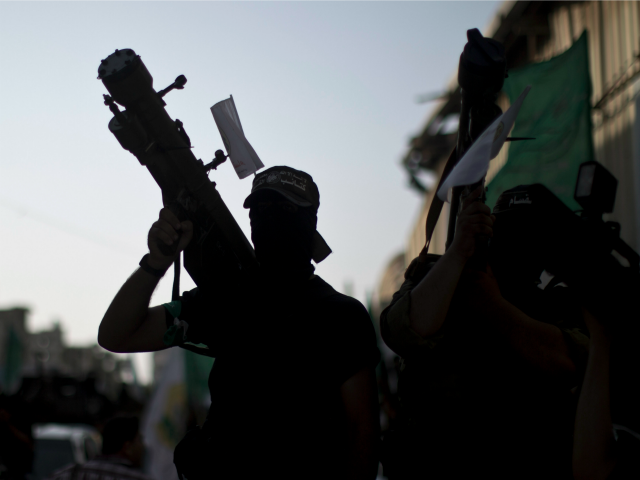TEL AVIV – Amid reports that a Syrian jet was shot down by rebels utilizing an antiaircraft missile, questions immediately arise as to where exactly the jihadi and moderate groups fighting Bashar al-Assad’s regime may have obtained such weaponry.
The possession of antiaircraft missiles by terror-tied rebel groups would not only mark a major escalation in the Syrian civil war, it would represent a significant threat to international air traffic amid the risk of the proliferation of such missiles.
The Syrian army said on Wednesday that its plane was shot down by rebels with an antiaircraft missile and video footage of the falling aircraft seems to be consistent with this kind of an attack.
Al-Qaeda-affiliated rebels from the Al-Nusra Front reportedly captured the pilot alive and brought him to their headquarters. He has since been identified as Col. Khaled Saeed, and he appeared in an Al-Nusra propaganda video confirming his capture.
The event marks the second time the Syrian government says it was attacked in recent weeks by rebels deploying antiaircraft missiles. The Syrian military last month said one of its warplanes was shot down in western Syria in March.
The L.A. Times provided some background on the rebels’ attempts to obtain anti-aircraft weapons:
Earlier in the war, rebel groups managed to obtain some shoulder-fired anti-aircraft missiles from Syrian Army depots and from the government of Qatar. They have long argued that they need a reliable supply of the missiles, known as man-portable air-defense systems.
The United States, Saudi Arabia, and other backers have rejected their pleas amid concern that the missiles could fall into the hands of Islamist militants and be used against Western targets.
So just how did the rebels suddenly obtain the missiles? Were they transferred by an Arab government that opposes the Assad regime or Syria’s Russian backers?
Did NATO-member Turkey, already in hot water for brazenly shooting down a Russian warplane, pass antiaircraft missiles to rebels as part of Ankara’s obsessive bid to counter the Syria-Russia axis? Turkey, concerned by Syria’s recent gains against the Islamic State and other rebel forces, is known to be one of the main suppliers of more extremist elements among the anti-Assad rebels.
There is also the possibility that antiaircraft weapons were obtained by Syrian rebels from elements that looted Moammar Gadhafi’s reserves of Man-Portable-Air-Defense-Systems, or MANPADS. The largest terrorist looting of MANPADS took place immediately after the 2001 U.S.-NATO military campaign, strongly pushed by Hillary Clinton, that toppled Gadhafi’s regime in Libya.
NATO failed to immediately protect the reserves of MANPADS.
As I reported at the time:
Gadhafi had hoarded Africa’s biggest-known reserve of MANPADS, with a stock said to number between 15,000 and 20,000. Many of the missiles were stolen by militias fighting in Libya, including those backed by the U.S. in their anti-Gadhafi efforts. There were reports of a Western effort to secure the MANPADS, including collecting some from rebels in Libya.
Aaron Klein is Breitbart’s Jerusalem bureau chief and senior investigative reporter. He is a New York Times bestselling author and hosts the popular weekend talk radio program, “Aaron Klein Investigative Radio.” Follow him on Twitter @AaronKleinShow. Follow him on Facebook.

COMMENTS
Please let us know if you're having issues with commenting.